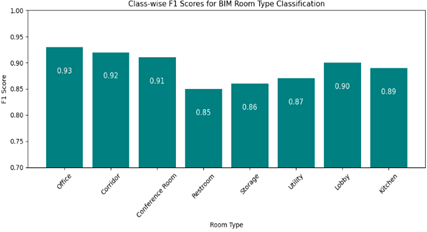Enhancing Semantic Enrichment of Building Information Models Using Edge Feature-Enhanced Graph Neural Networks
Keywords:
Building Information Modeling (BIM), Architecture Engineering and Construction (AEC), Graph Neural Network (GNN)Abstract
Building Information Modeling (BIM) has transformed the Architecture, Engineering, and Construction (AEC) industry by enabling detailed digital representations of building components. However, effectively capturing and utilizing complex spatial relationships within BIM models remains a critical challenge, limiting semantic richness and interoperability. This study proposes a novel Graph Neural Network (GNN) framework that incorporates edge features to explicitly model spatial and functional relationships between building elements. We constructed a comprehensive graph dataset comprising 14 room types and 4 spatial relationships to evaluate the framework’s performance on semantic classification tasks. Experimental results demonstrate that the edge feature-enhanced GNN significantly outperforms traditional machine learning classifiers and vanilla GNN models, achieving an accuracy of 91.8% in room type classification. Ablation studies highlight the importance of edge attributes and advanced graph techniques, such as the link-less subgraph method, in boosting model robustness and scalability. Furthermore, the proposed model exhibits resilience to data sparsity and noise, suggesting practical viability for real-world BIM applications. This research underscores the potential of advanced GNN architectures to enhance BIM semantic enrichment, supporting more intelligent, interoperable, and automated building design and management workflows.


